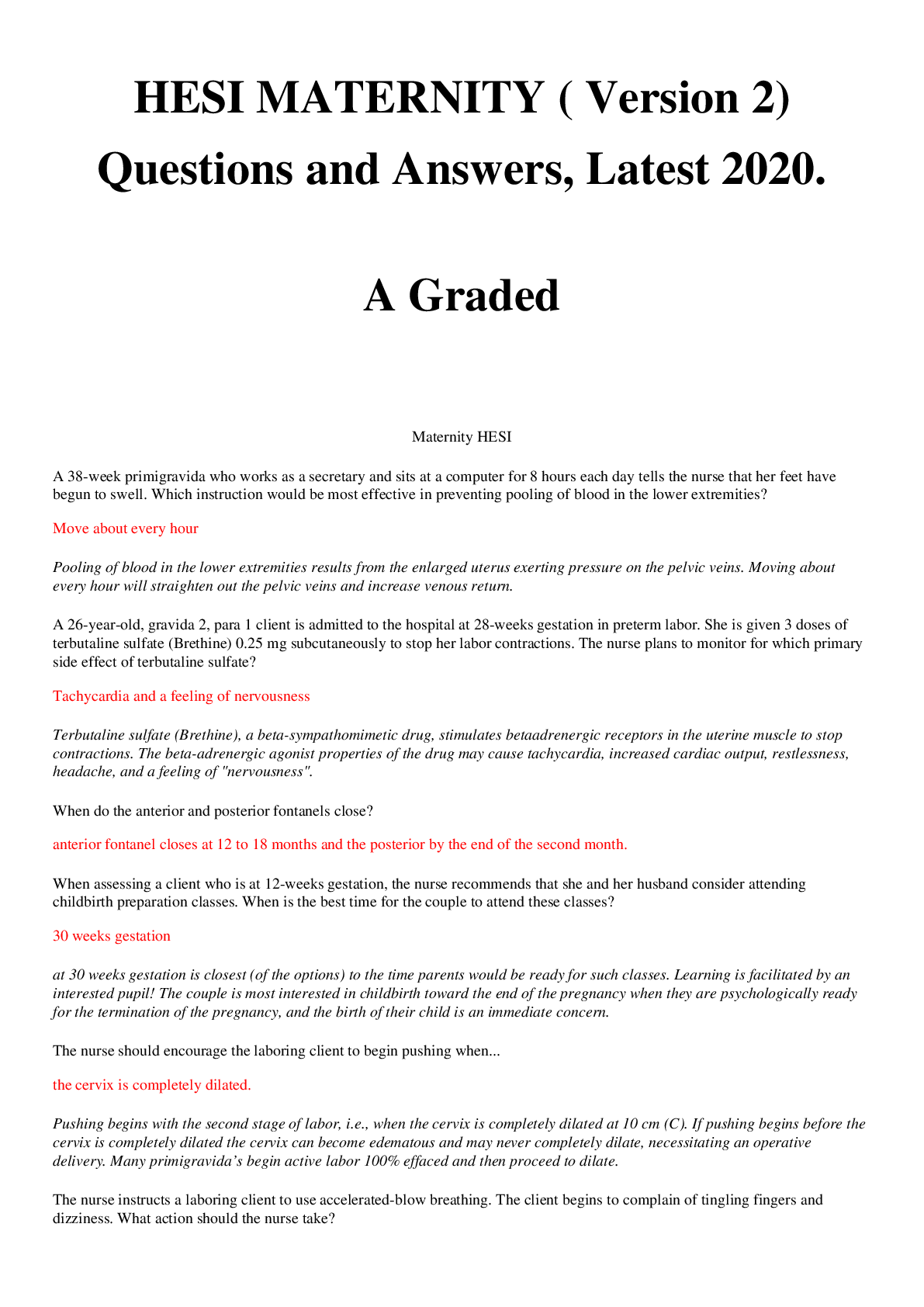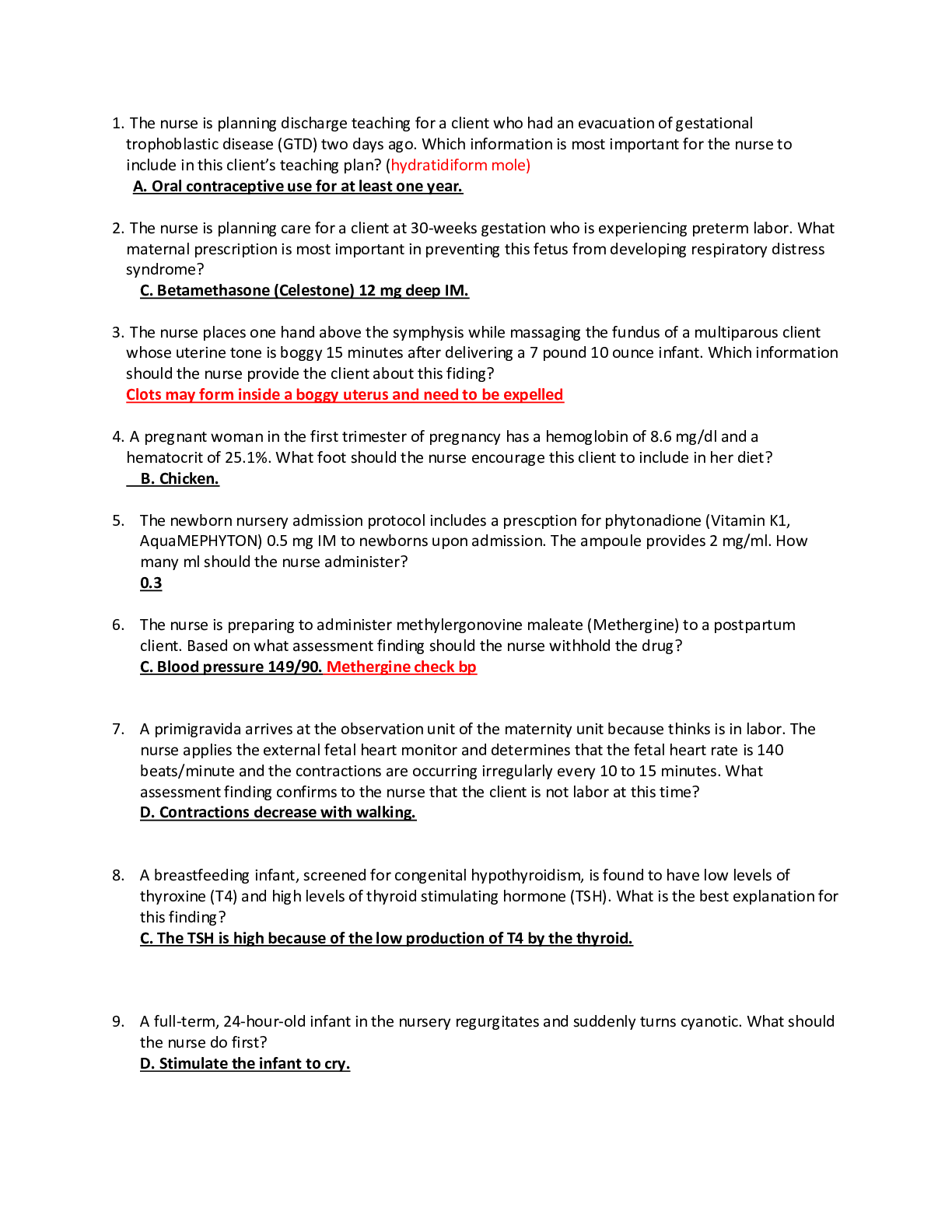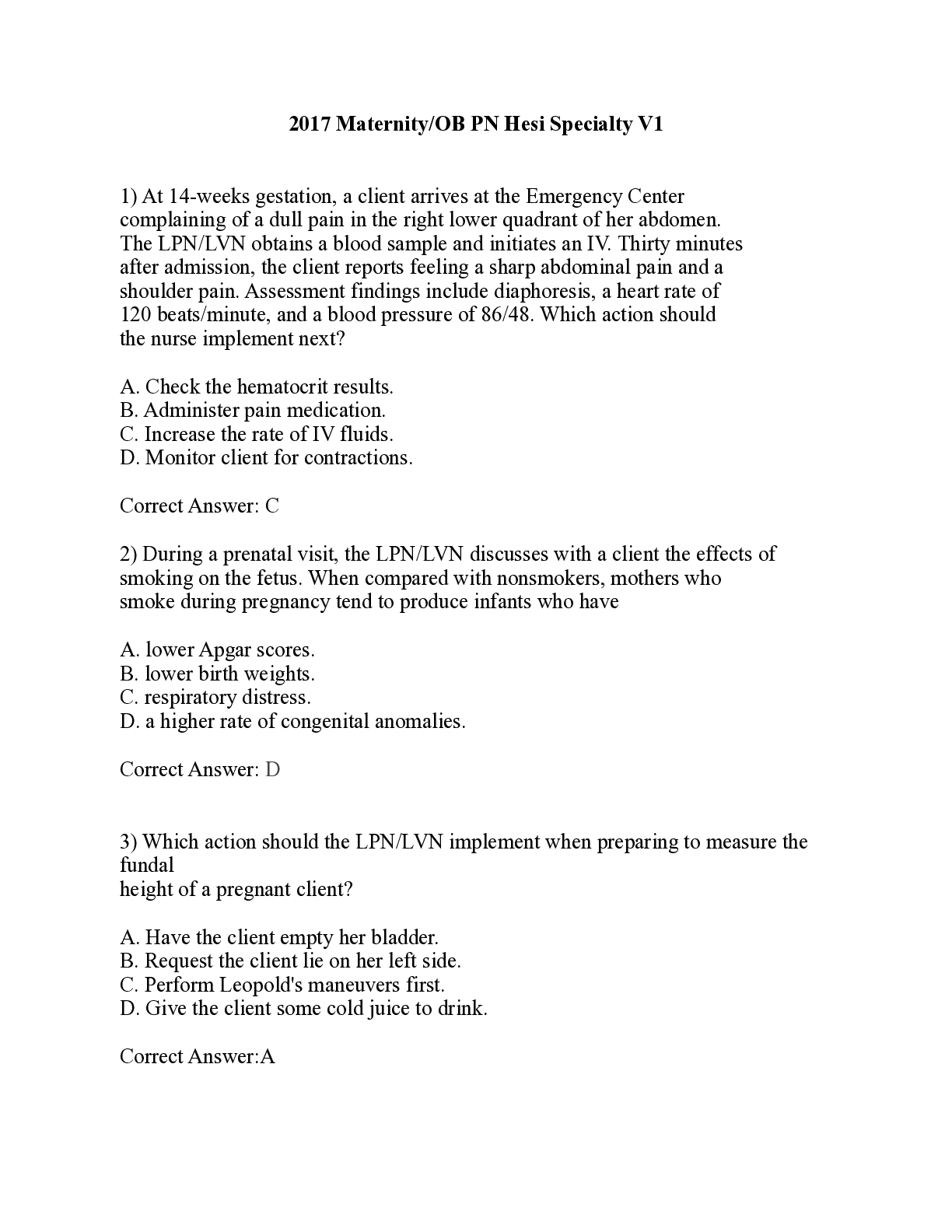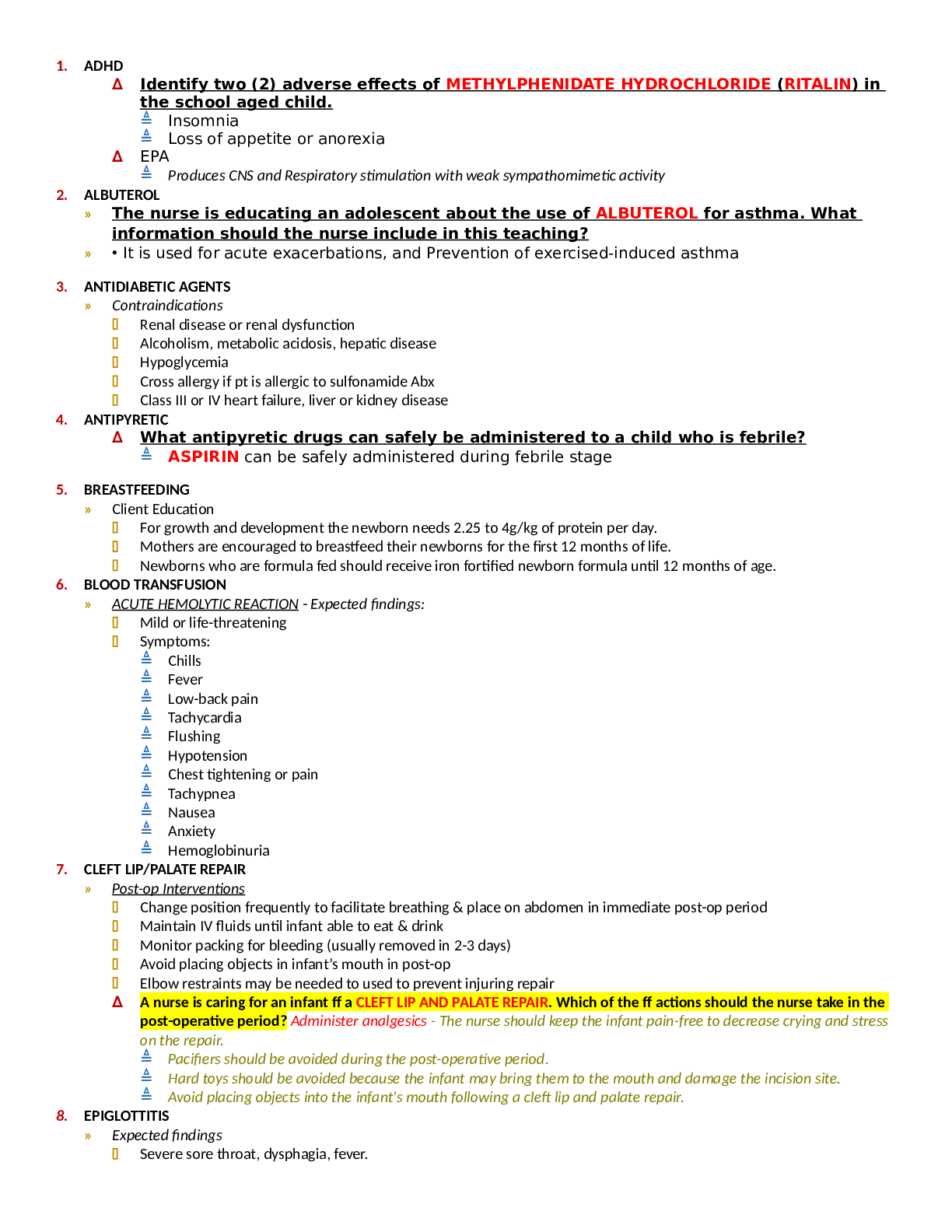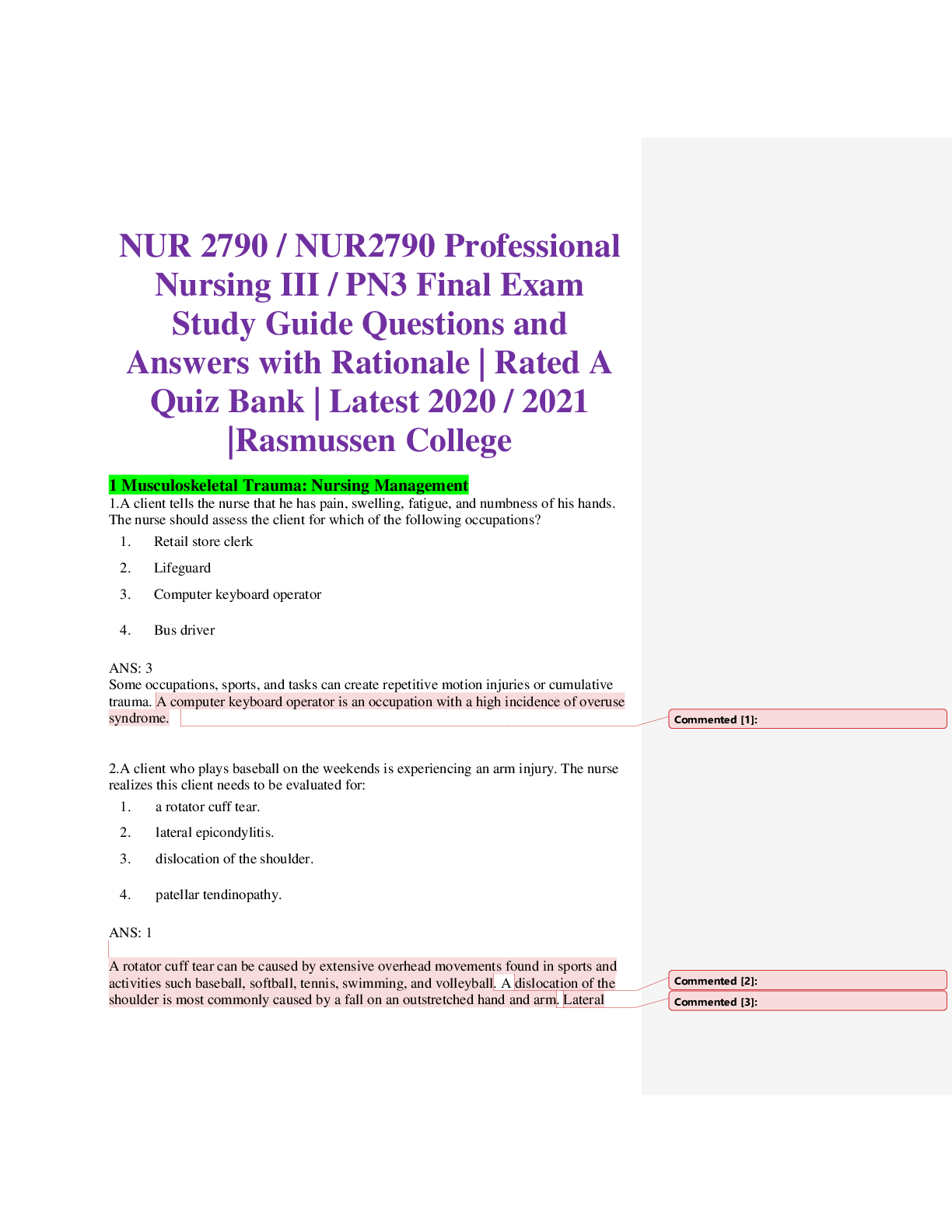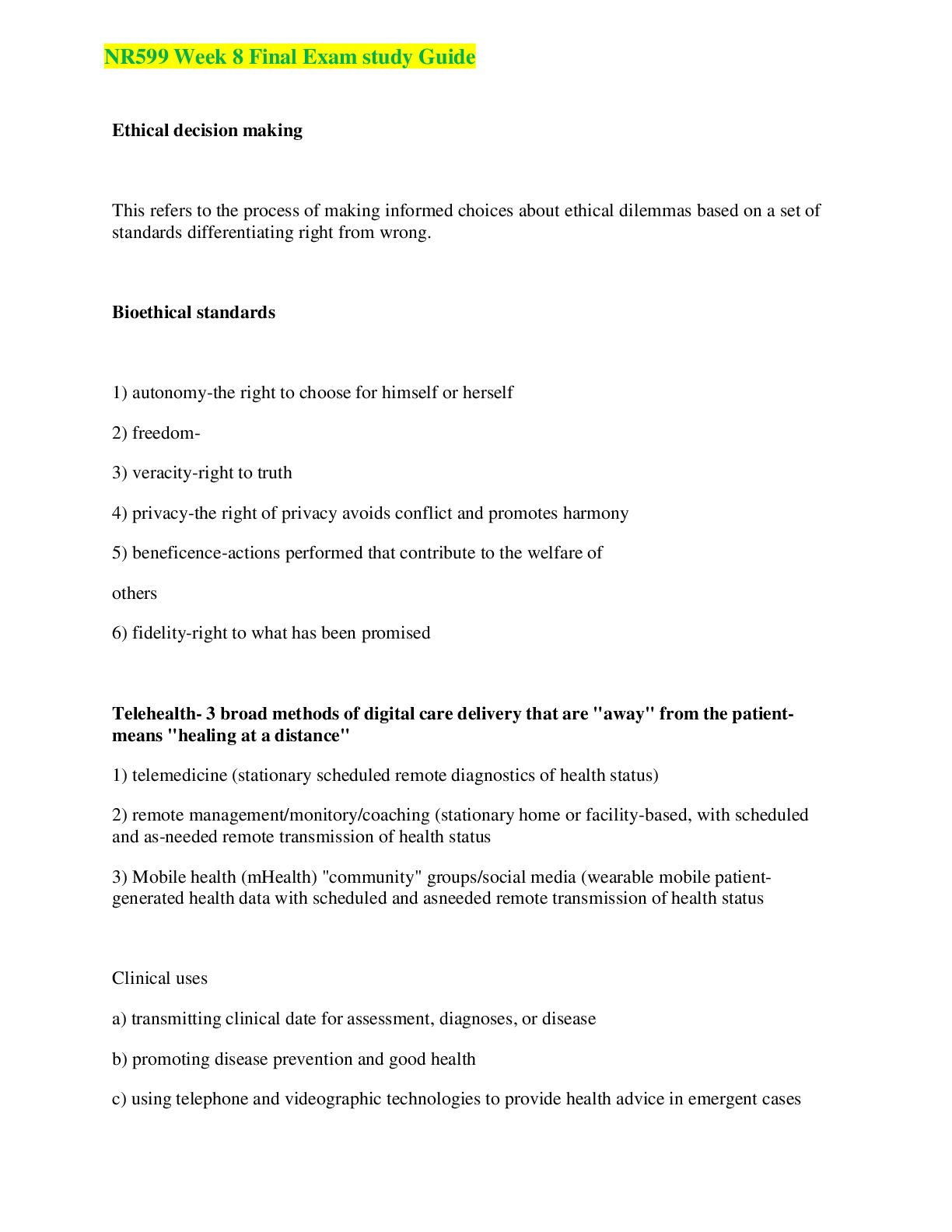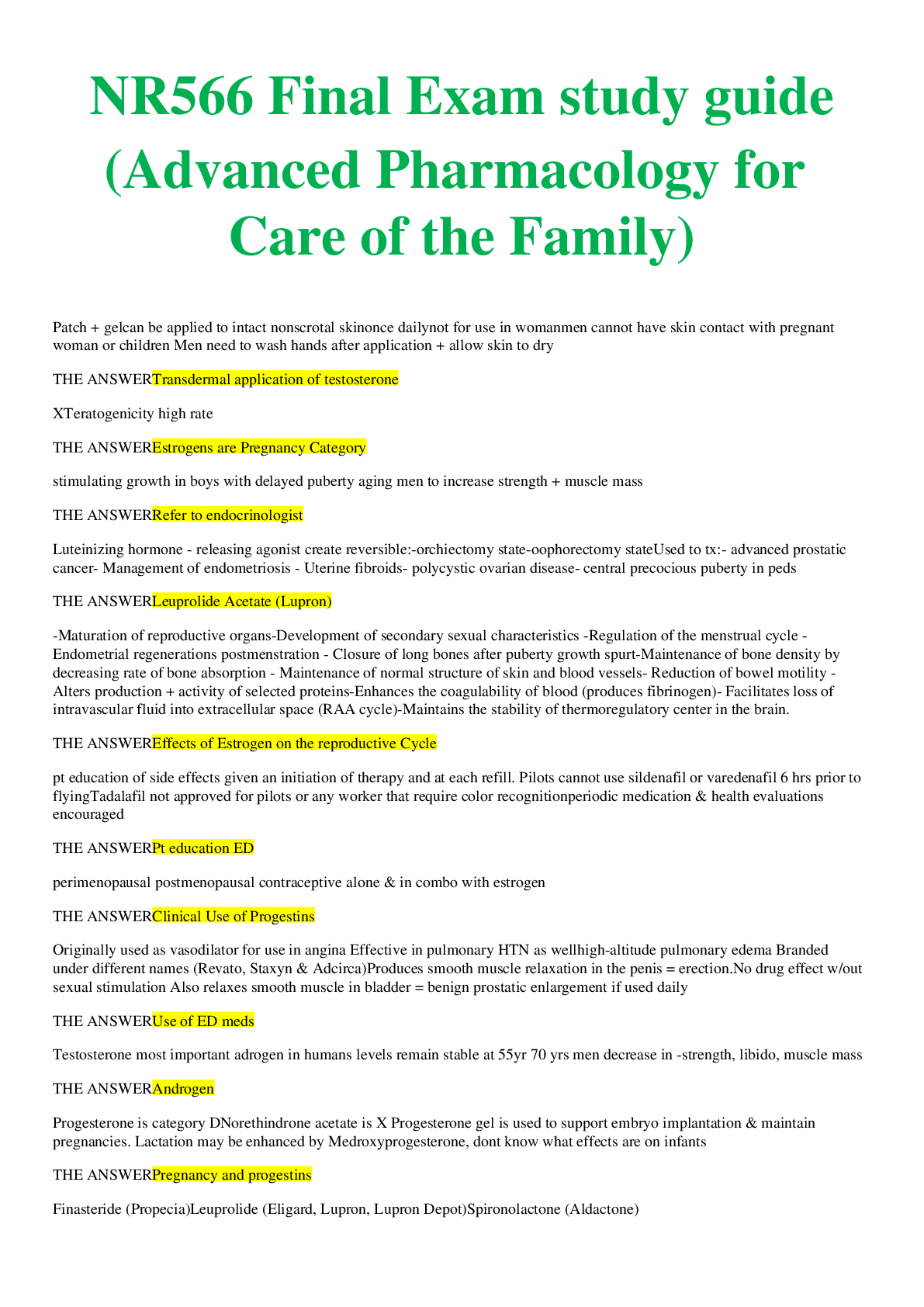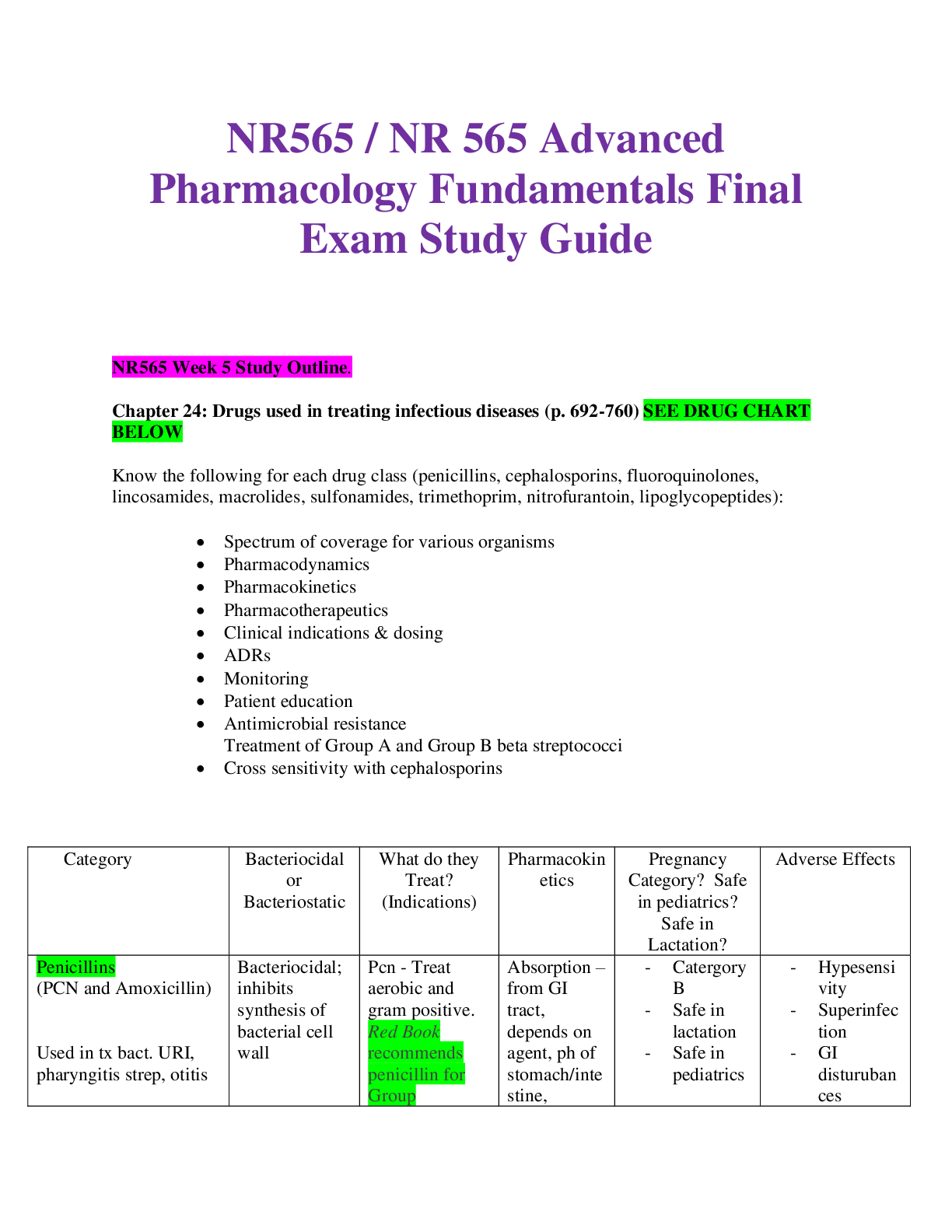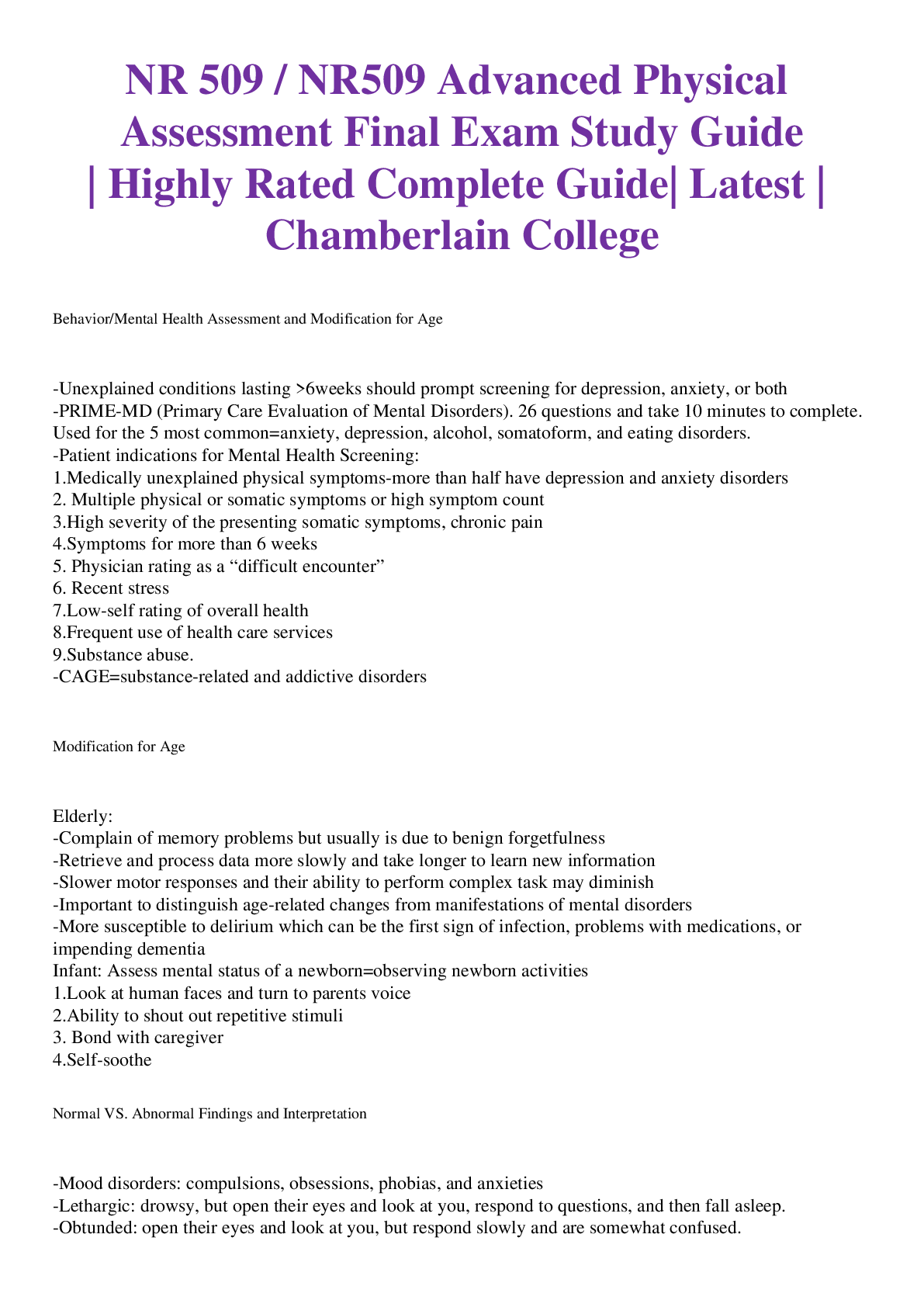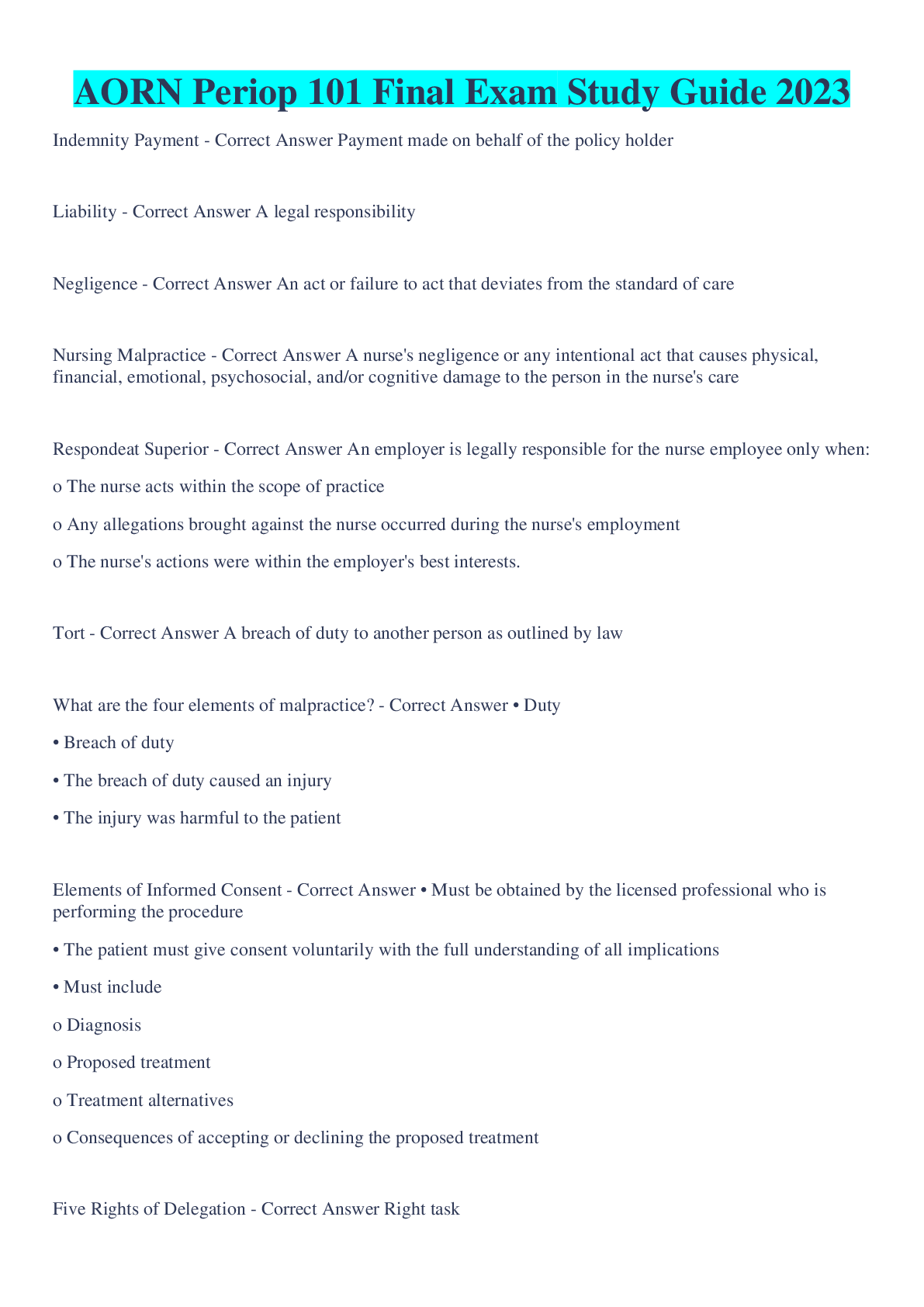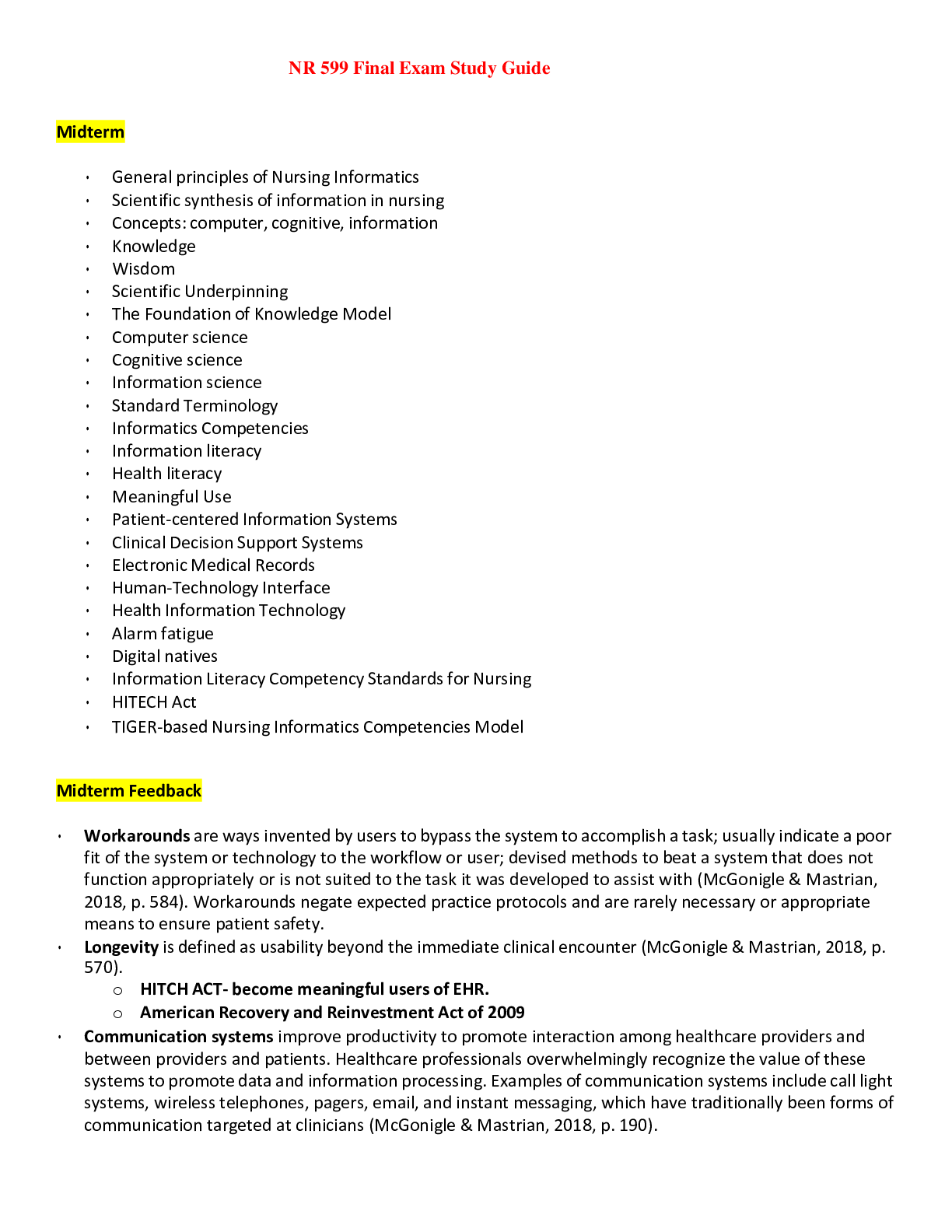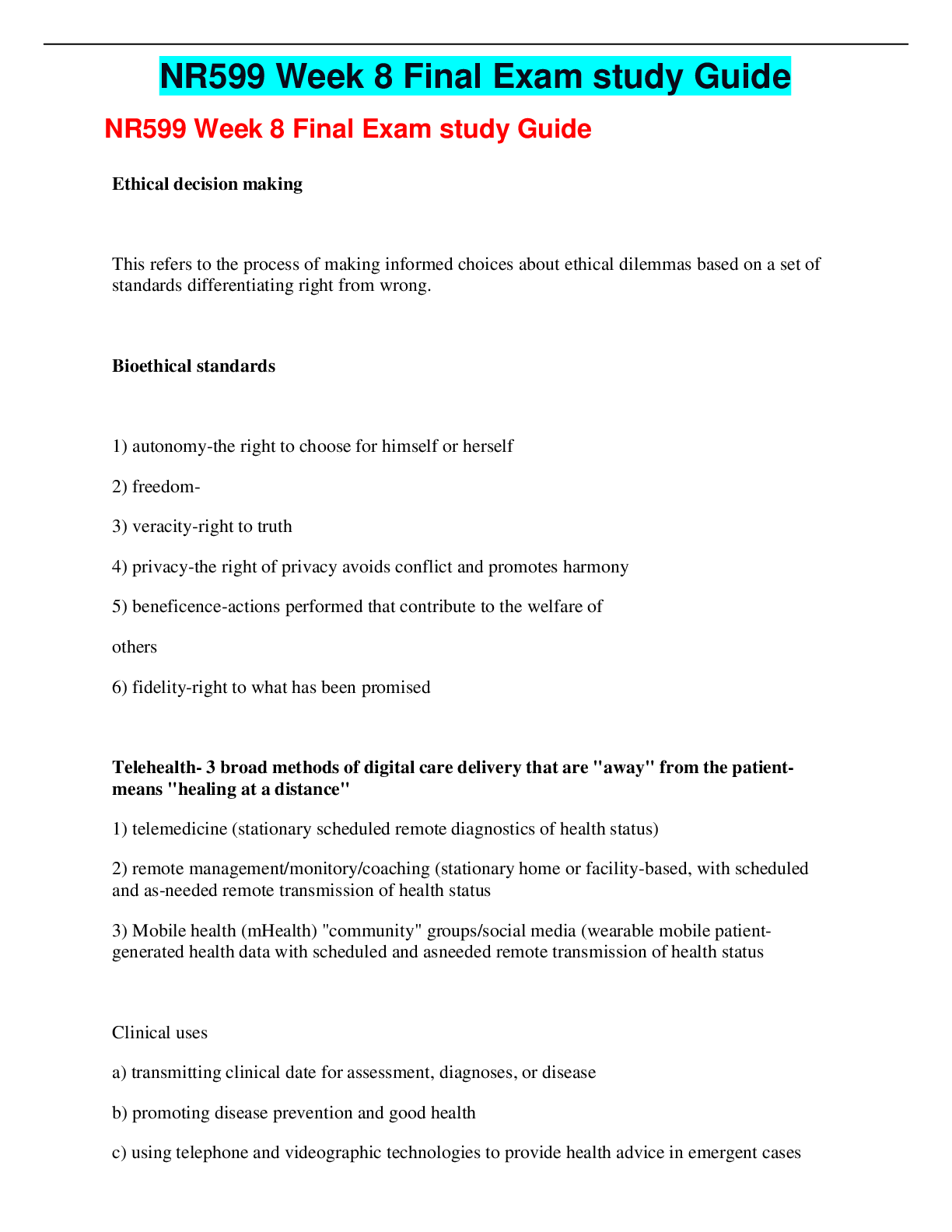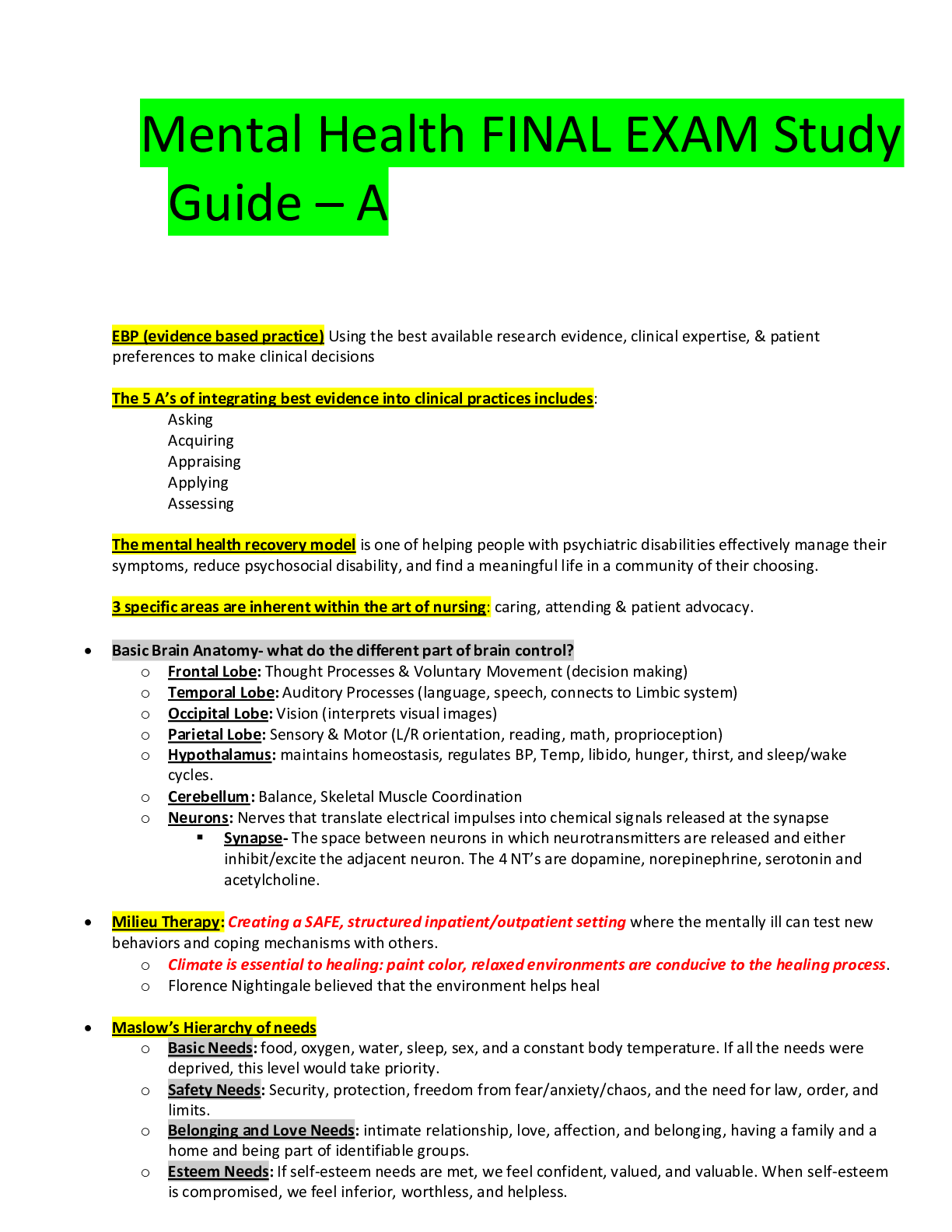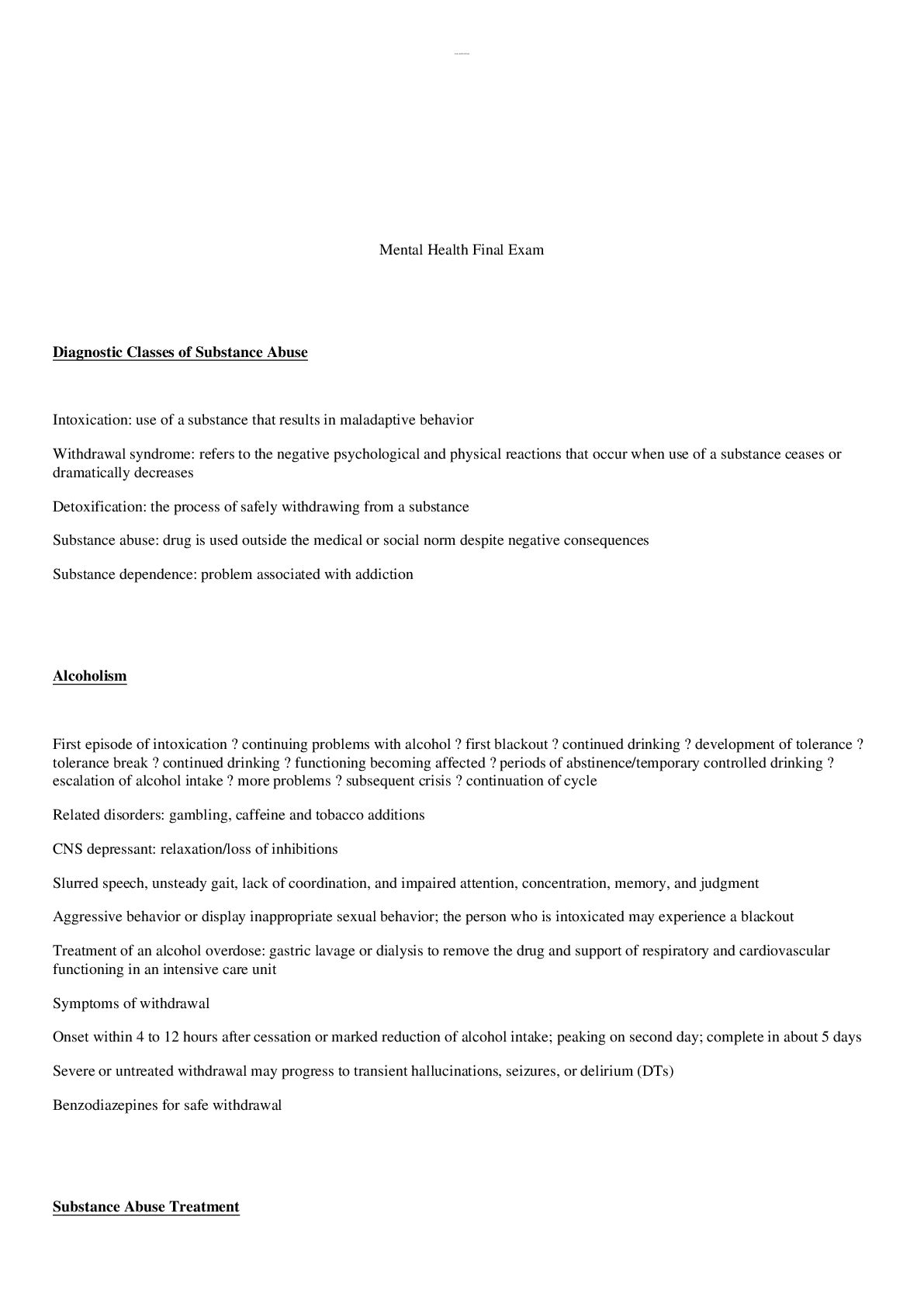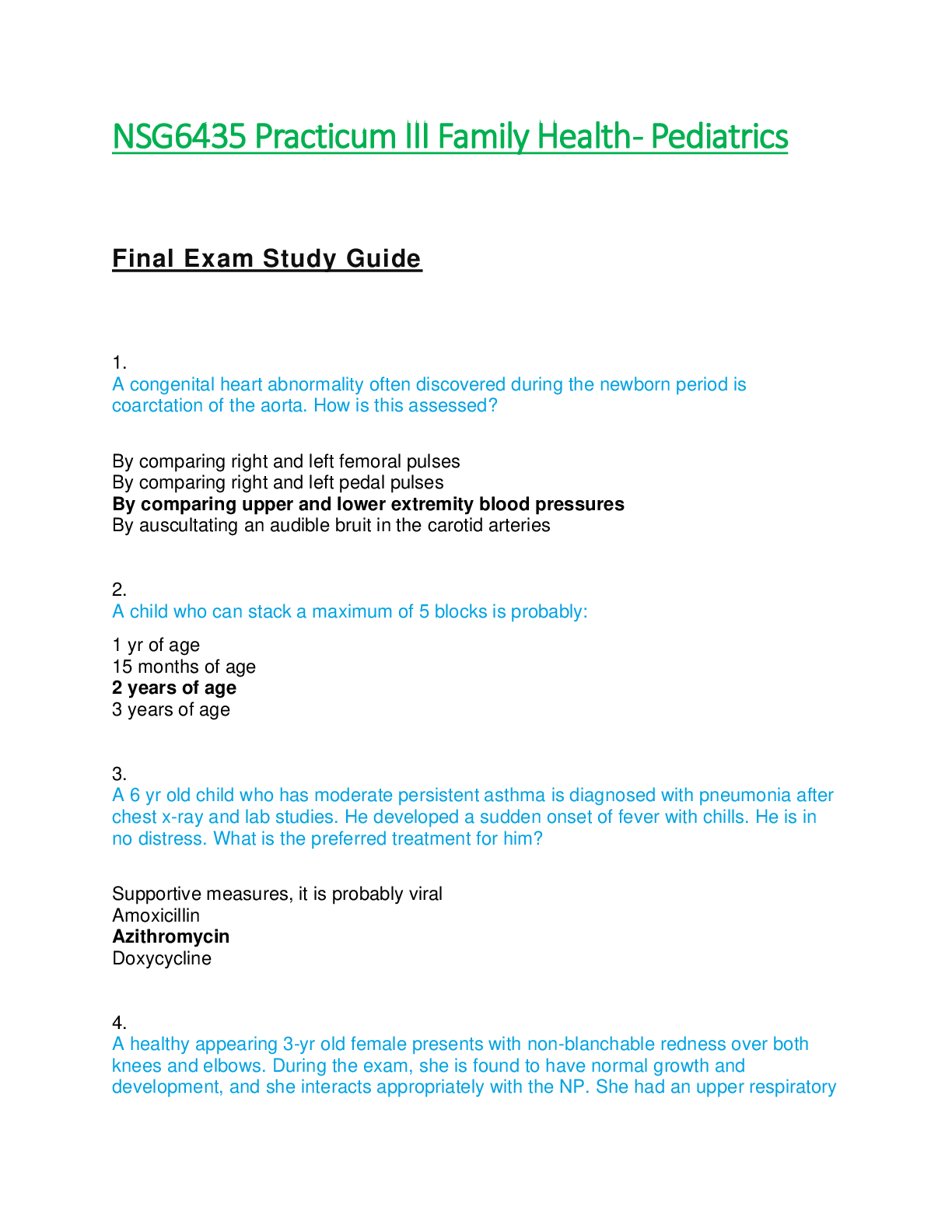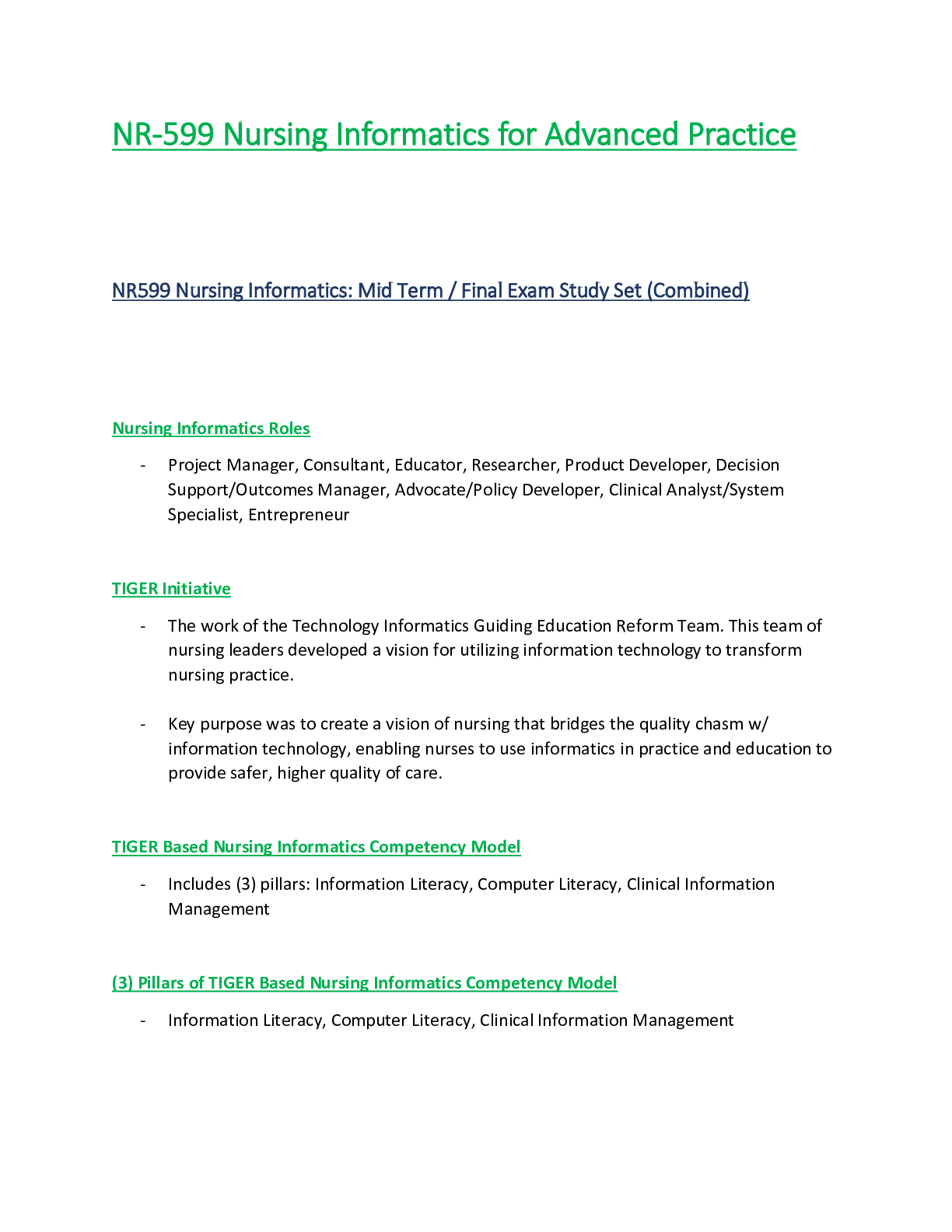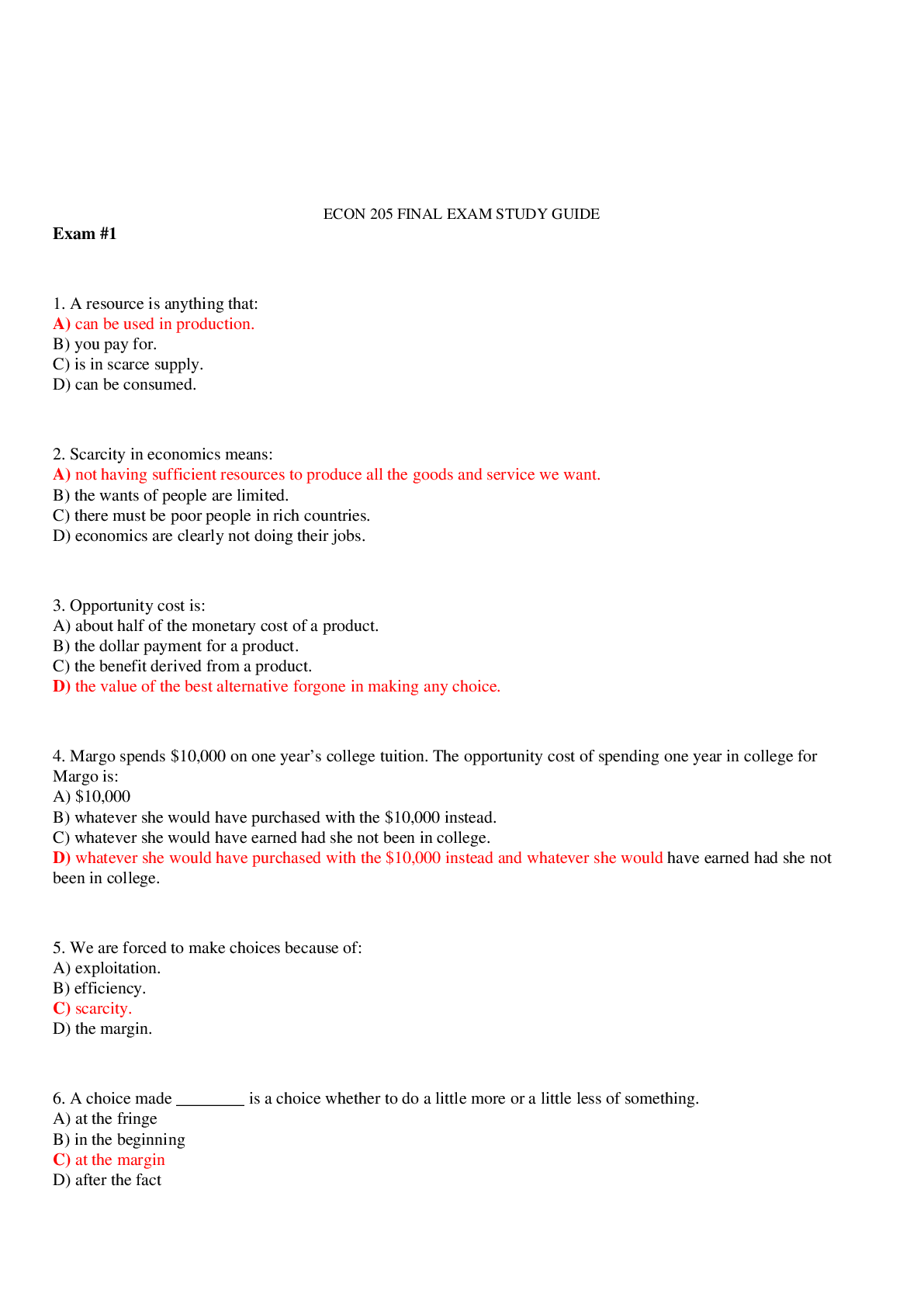Computer Science > EXAM > COMP 401 Final Exam Study Guide. Latest 2021 (All)
COMP 401 Final Exam Study Guide. Latest 2021
Document Content and Description Below
COMP401 Final Exam Study Guide Object-Oriented Programming: - Programs expressed as a set of software “objects”. - Each object is associated with data and a set of functions or procedures that... operate with that data. - Objects are defined by their “class.” - Each class represents an abstraction - Abstractions often layered on top of each other and/or composited into more complex abstractions. - The operation of the program is the result of creating objects and having them interact with each other. Major Themes Of This Course: 1. Abstraction 2. Encapsulation 3. Inheritance 4. Polymorphism 5. Delegation 6. Design Patterns 7. Asynchronous Programming Value vs. Reference Types: Value Types: Reference Types: - Integers - Strings - Real Numbers - Arrays - Booleans - Objects typed by their class - Characters - Classes themselves Value Types are defined entirely by their value Reference Types are structures in memory. Method Signature: Almost everything you need to know about a method is in its signature - 5 parts to a method signature 1. Access Modifier a. Public, private, protected 2. Method Type a. Static or default b. The keyword static indicates that this is a “class method”. c. If the keyword static is not present, then this is an “instance method”. 3. Return Type a. The type of value returned by the method as a result. b. If there is no result, then this is indicated by the keyword void. 4. Method Name a. Must start with a letter, $, or _ b. Can contain letters, numbers, $, or _ (no spaces or other punctuation)/ 5. Parameter List a. In parenthesis, comma-separated list of parameter typed variable names. b. Each parameter variable name is preceded by a type Declaration. Calling Methods: - Calling a class method defined in the same class: - methodName(parameters); - Calling a class method defined in a different class (same package): - ClassName.methodName(parameters); - Calling a class method defined in a different package: - PackageName.ClassName.methodName(parameters); - In the above “parameters” is a comma separated list of values. - A value can also be an expression that results in a value. - Must match in number and type according to method’s signature. Java Execution Model: - Your program is always executing within the context of some method. - Starts off in the “main” class method defined in whatever class you told the program to start with. Strings: - String class: - Sequence of chars. - Strings are immutable. Arrays: - Container for a fixed number of values with the same type. - Zero based indexing - Variables for arrays declared by using [] after type. - Empty arrays can be created with new keyword. - Literal array syntax can be used to create array from literal values. Classes and Objects: - Fundamental units of abstraction - Physical Analogy - Classes are like factories - Contains a blueprint for an object - Defines the inner workings (i.e., fields aka members). - Defines what it can do (instance methods). - Factory itself may have some capabilities - Class members and class methods - Relate to the abstraction as a whole and not to a specific instance. - Objects are what the factory builds - Each object is an instance of a class - Name of the class is the datatype of the object - Which means it is the datatype of any variable that can reference the objec [Show More]
Last updated: 1 year ago
Preview 1 out of 25 pages

Reviews( 0 )
Document information
Connected school, study & course
About the document
Uploaded On
Sep 30, 2021
Number of pages
25
Written in
Additional information
This document has been written for:
Uploaded
Sep 30, 2021
Downloads
0
Views
53


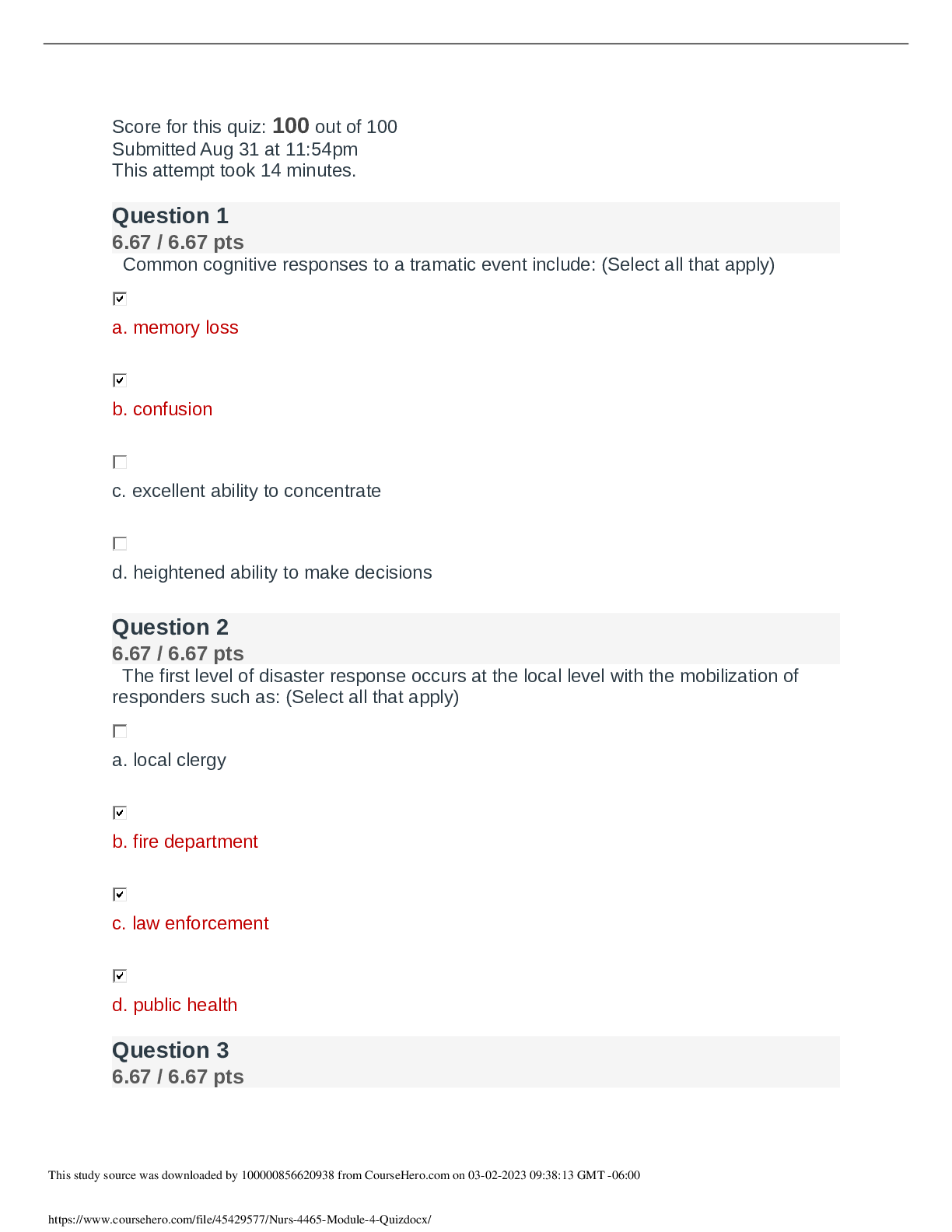
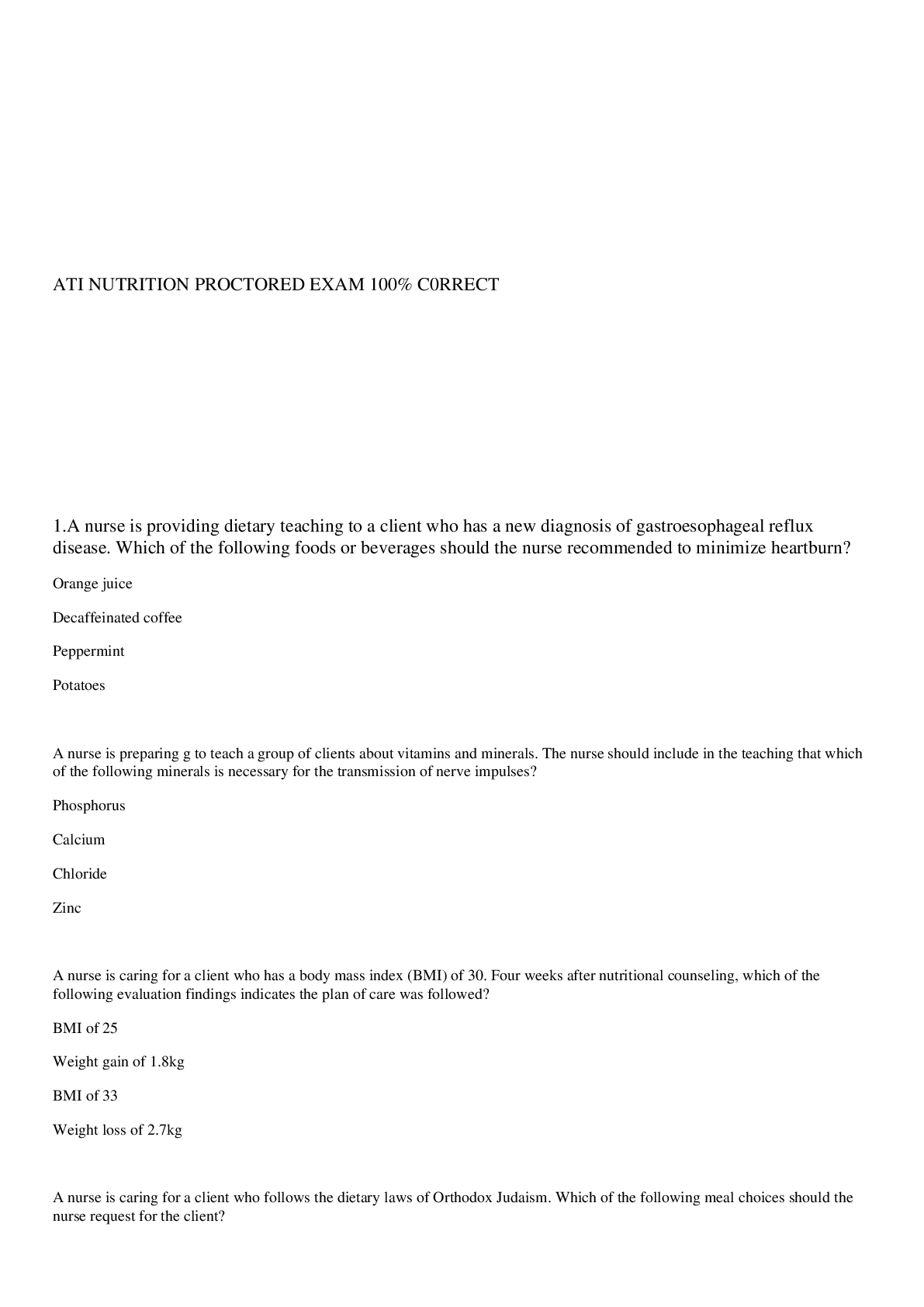
.png)
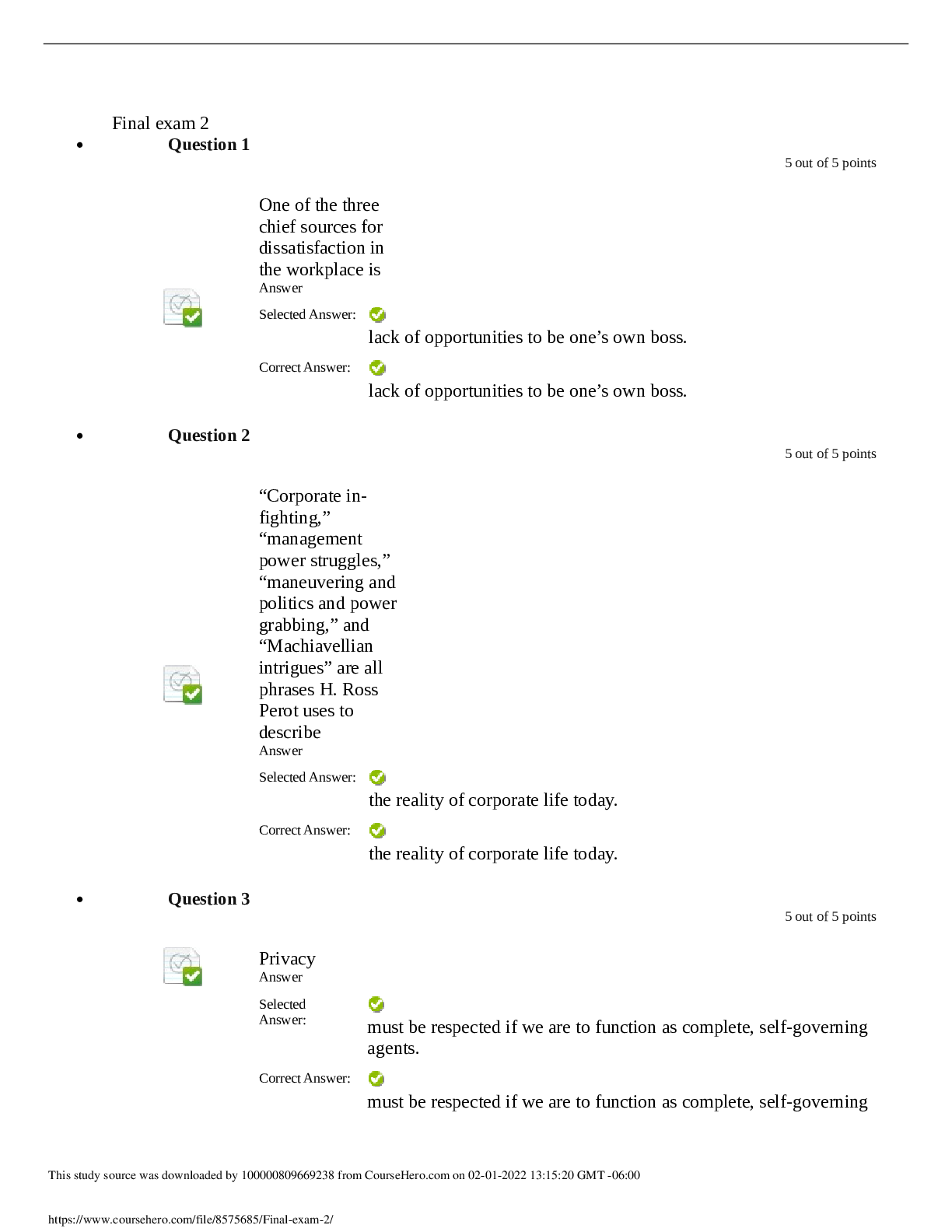
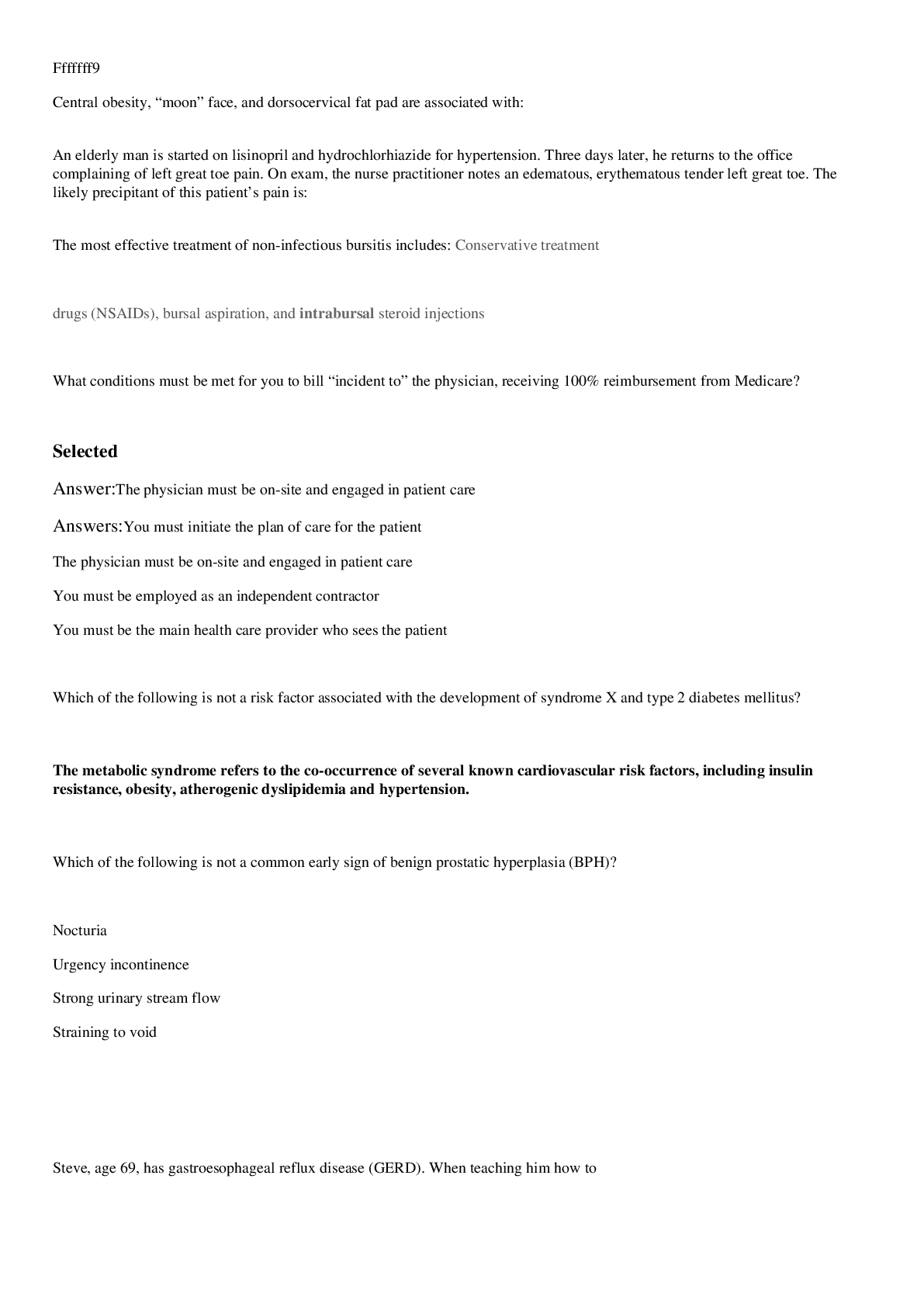

.png)
